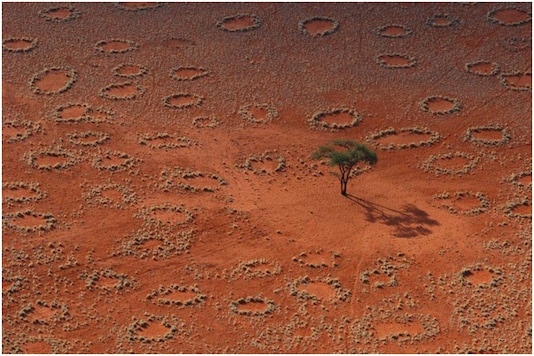For decades scientists have been puzzled over the cause of fairy circles, the bare circular patches in the arid grasslands found in the Namib Desert in Namibia, Angola, North-western South Africa, and a recent study might have finally found its cause. The study was conducted by scientists from the University of Pretoria and ITMO University in St Petersburg found that the cause of the fairy circle is dead Euphorbia species sap.
The research was started in 2015 by Professor Marion Meyer from the Department of Plant and Soil Sciences in Pretoria and included seven other members. They studied the effect of toxic Euphorbia species, which are basically milk bushes, on fairy circle soil chemistry and water hydraulics, their germination inhibition and antimicrobial activity on rhizosphere bacteria.
The study, which was published earlier this month in the BMC Ecology, a Springer Nature journal, provides soil chemical, phytochemical and Geographic Information System (GIS) spatial patterning evidence that fairy circles of Namibia and other parts of Africa are caused by deadly Euphorbia species. The research also suggests that the Euphorbia plant colonised sandy plains when climatic conditions were more favourable in the past.
Since sandy soils in Namibia have a low water-holding capacity and might facilitate the formation of a hydraulically connected landscape, the Euphorbia plants come under pressure for water and nutrient availability. These plants release water-repelling sap when they die that hinders the growth of other grassy plants that creates a barren featureless circle.
Due to the less than favourable climate conditions, the lack of water there is increased competition between these plants and many died. The research also points out that the temperature increase in Namibia during the last two or three decades is roughly three times more than the global mean temperature increase reported for the 20th century.
Although seeds do germinate inside fairy circles and seedlings emerge after a good rainfall, they survive only for a short period of time. With the harsh desert conditions, the research suggests that the seedlings in the fairy circles die due to the soil water that infiltrates to depths beyond the reach of the roots of seedlings. However, it is expected that after a few decades or even centuries, with the occasional rain, the effect left in the soil by euphorbias will erode and seedlings will survive for longer periods.
